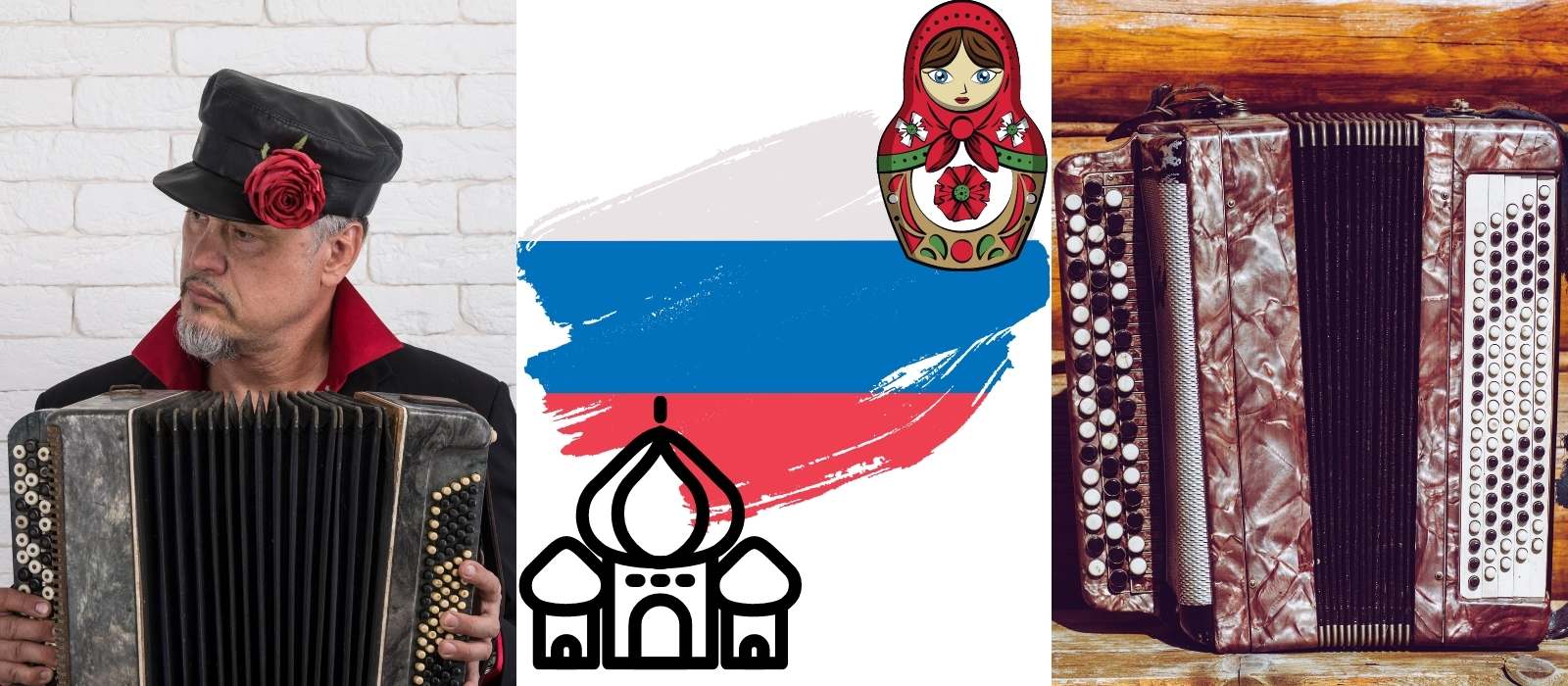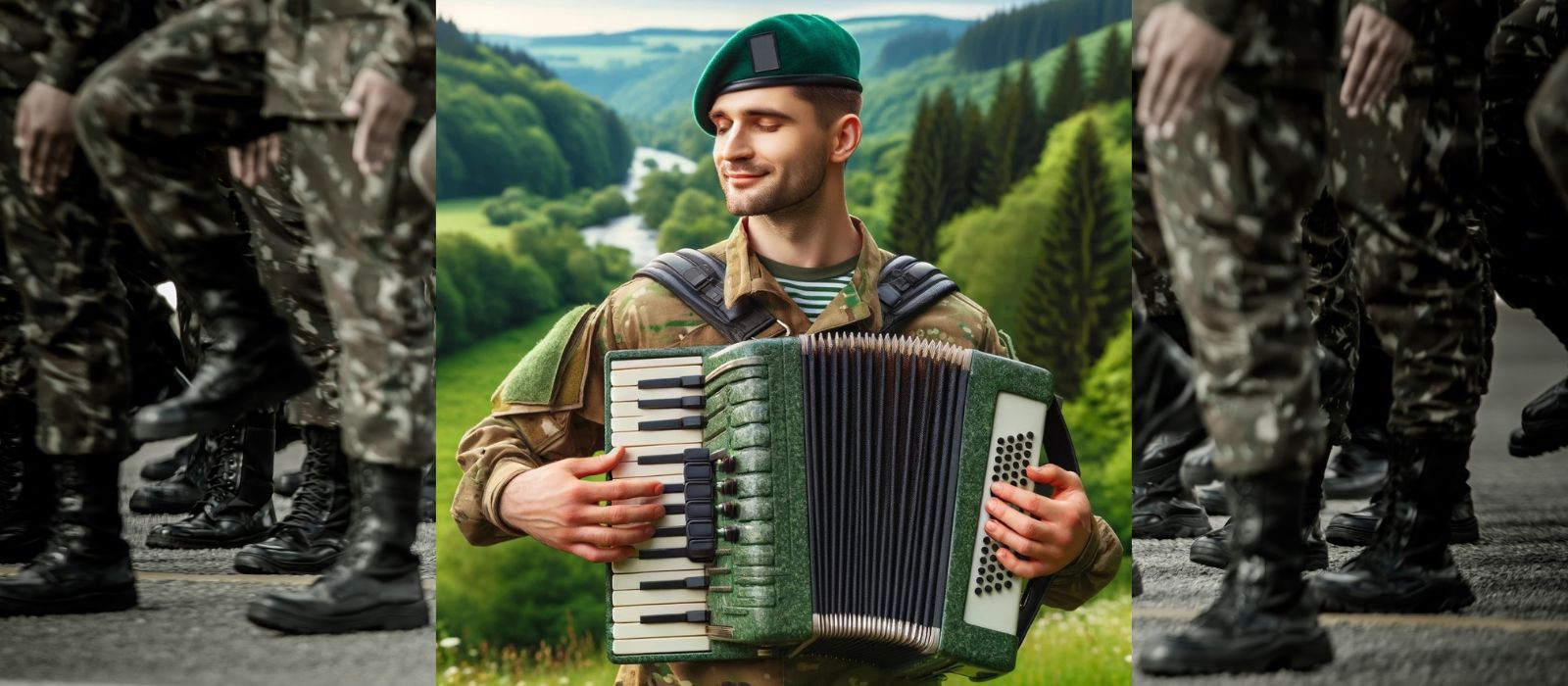Accordion first reached Russia sometime in the early 1800s. (Musical historians believe that the accordion was played in Russia for the first time in 1820). Some historians also believe that Russia had developed its own version of the accordion long before the German and Austrian inventors began to patent their version of this free-reed instrument.
They strongly believe that early versions of Russian accordions were based on the Chinese folk instrument known as Sheng and that Russian added bellows to it in order to produce sound. Once the Western European version of the button squeezebox was introduced to Russia in the 1890s, Russian manufacturers became making their versions of the accordion.
Today we are familiar with the popular Russian button accordion known as Bayan. This chromatic button accordion evolved from its predecessor, popularly known as the Garmon. Let’s acquaint ourselves with some basic knowledge about these fabulous musical instruments in their descriptions below.
Russian Garmon, what is it?
Some may disagree that the accordion is considered to be a Russian national instrument not only by Russians but by many other nations as well, but Garmonika, Garmon, or Garmoshka (Russian for accordion) most certainly is. Russians will tell you that Garmon is their national treasure.
It is a unisonoric (generating the same sounds on push and draw of the bellows) free-reed instrument belonging to the accordion family. Garmons are usually equipped with two rows of buttons on the right side (playing the notes of diatonic scale) and, at least two rows of buttons on the left side (playing the primary chords).
Garmons or Garmonikas were mass-produced in a town called Tula. Russian garmon brands like Kasimov, Eleyski, Viatica, and others became widely accessible and spread through the Caucuses and Eurasian republics.
Garmons are widely used in Russian folk music, polkas, and various folklore dances. There are several versions of Russain Garmon. Some of them are Vyatka Garmon, Tula Garmon, Saratov Garmon, Khromka, Livenka.
Garmon vs Bayan accordion
Garmon or Garmoshka is a unisonoric, diatonic folk instrument geared towards traditional folk music, patriotic songs, and dance melodies and is very beginner friendly. On a Garmon, you can play in one major or one minor whereas on a Bayan accordion you can play a lot more keys and scales.
Bayan accordions have richer bass and the sound of the right side has no tremolo unless we are talking about modern, contemporary concert models, Garmons or garmoshkas according to some accordionists sound more like a barrel organ. Bayan accordions were developed and adapted a bit later than Garmons and Garmoshkas so we can say that the latter were predecessors to the famous Bayan button accordions.
Is Garmon difficult to learn?
Garmon is not difficult to learn at all. Many professional accordionists started their careers on a Russian garmon accordion. Children, teens, and adults love this musical instrument, and these Russian folk accordions are often given as presents or furnished to music schools and institutes as suitable musical instruments for beginners.
Bayan Accordion
Bayan is a Russian chromatic, button accordion. The button accordion was introduced to Russia in 1892 when some of the first button accordions were brought to Moscow from Germany.
These accordions were modified with a so-called “Moscow” button board and tuned to B-system. Although a Bayan accordion looks almost identical to a western chromatic button accordion, there are some key differences between the two instruments.
Bayan accordions are played in a B system or B griff. A close cousin of a Bayan accordion would be the Serbian accordion known as “Dugmetara” or “Harmonika Dugmetara” which is also the button accordion tunned to a B griff.
What are Russian folklore musical instruments?
Dino is a hobbyist accordionist who loves music, photography, architecture, design and a slew of other fun things. He decided to launch this blog due to an increasing popularity of the accordion. He learned how to play the accordion by ear as a child and then progressed on to keyboards and eventually a drum set. He grew up in the Balkans and now lives in California where he occasionally plays the accordion at birthday parties and NYE celebrations. He now shares his love for the accordion through this blog.






Leave a Reply